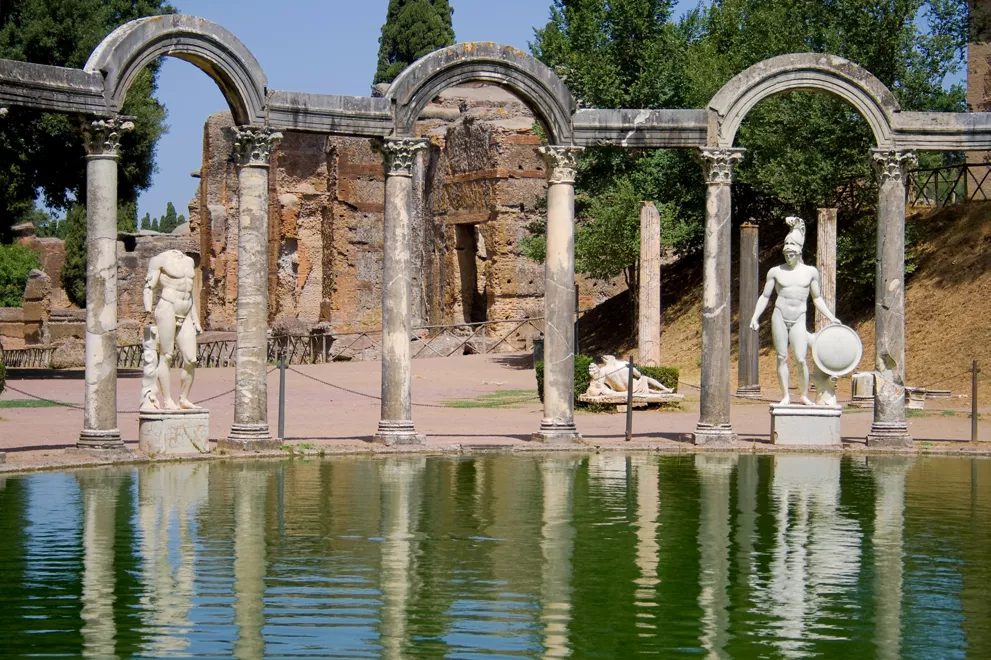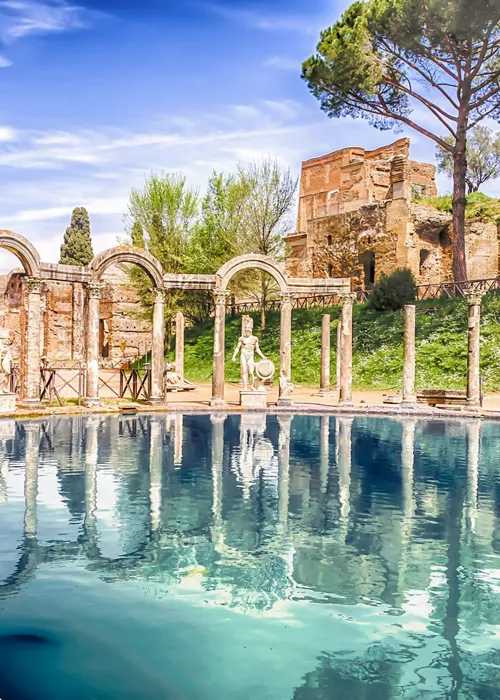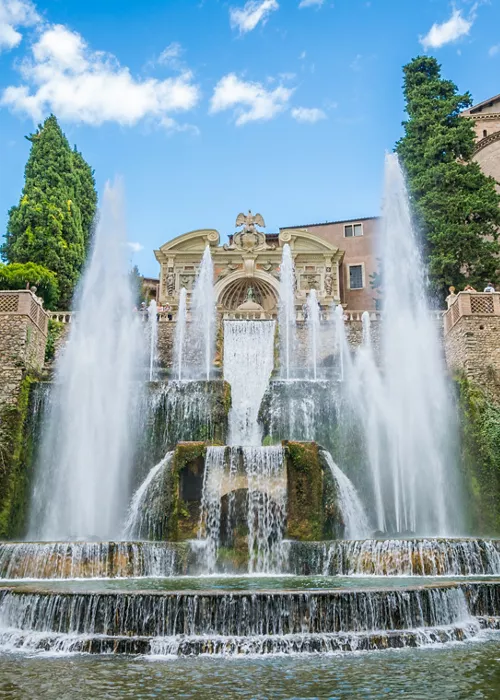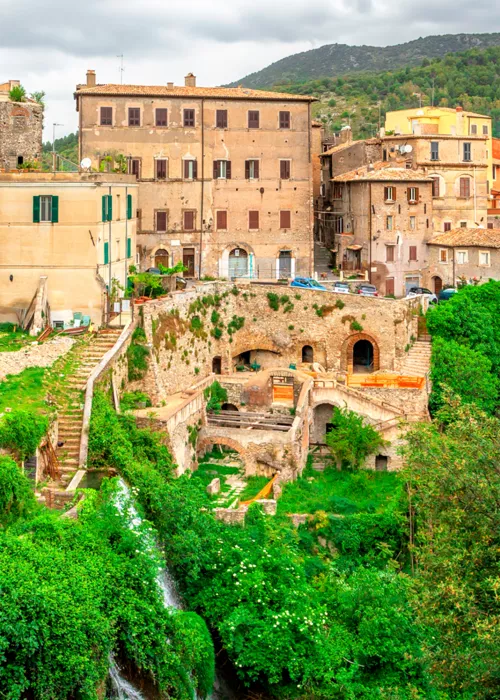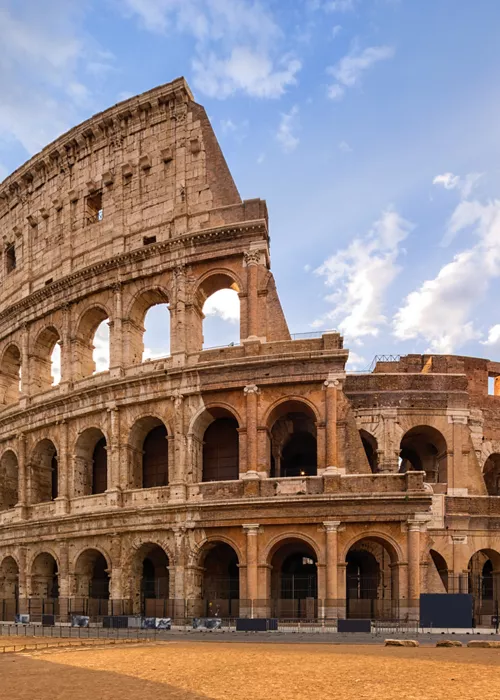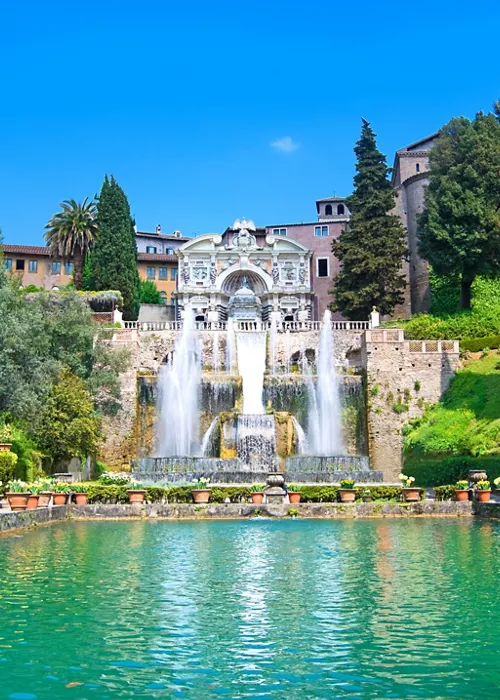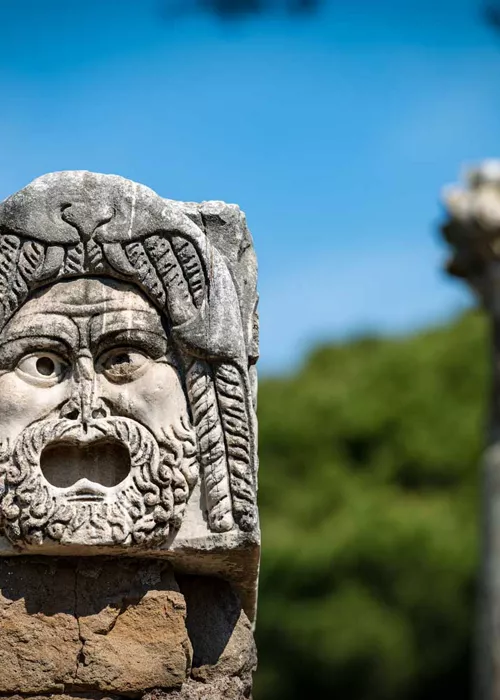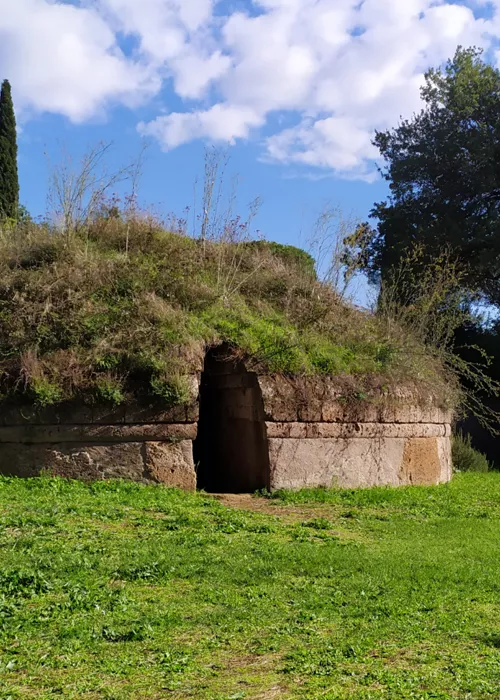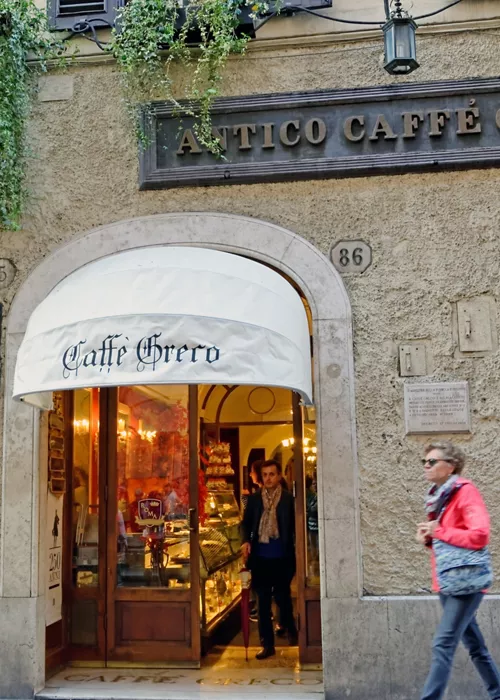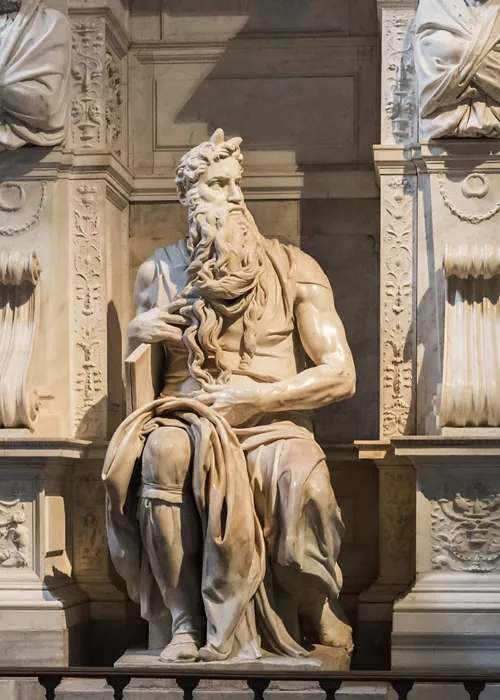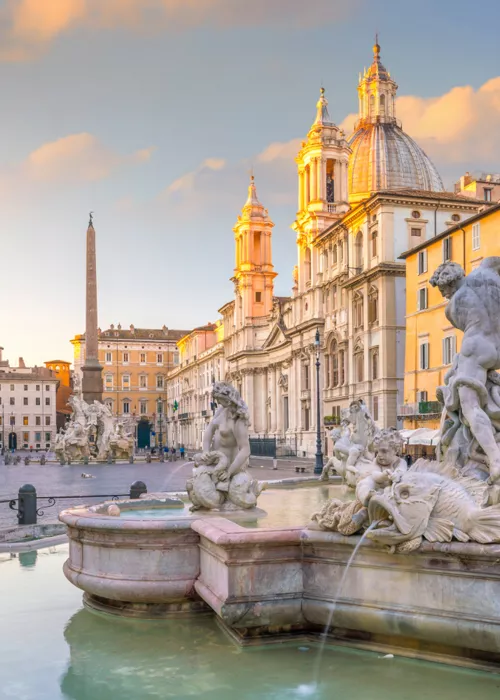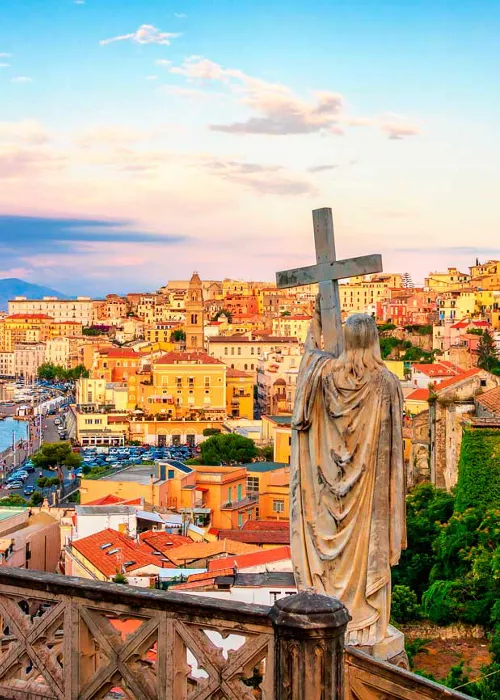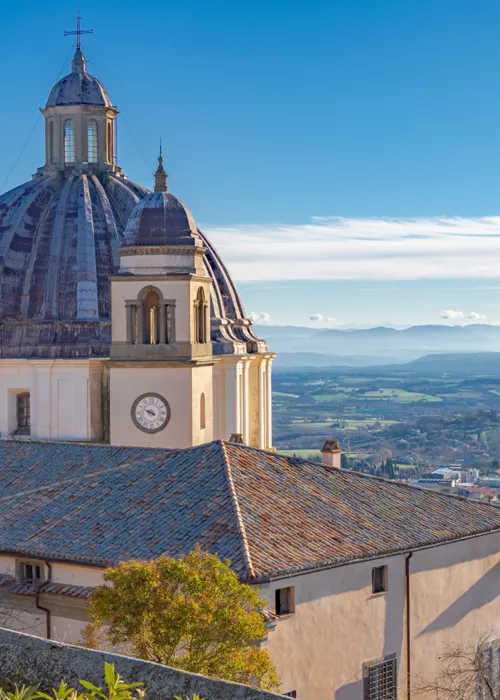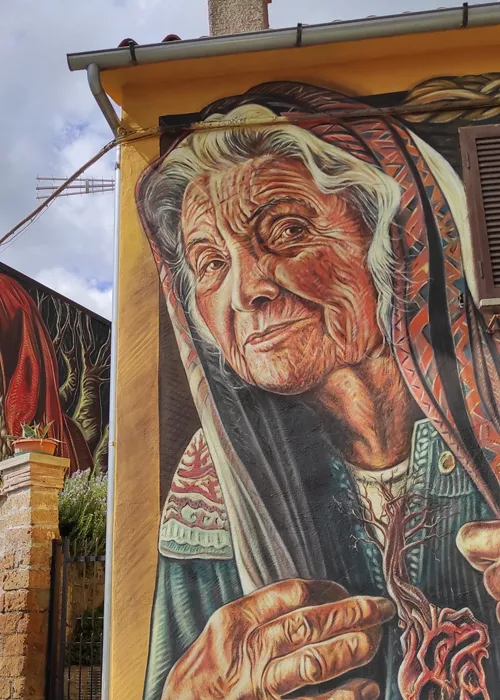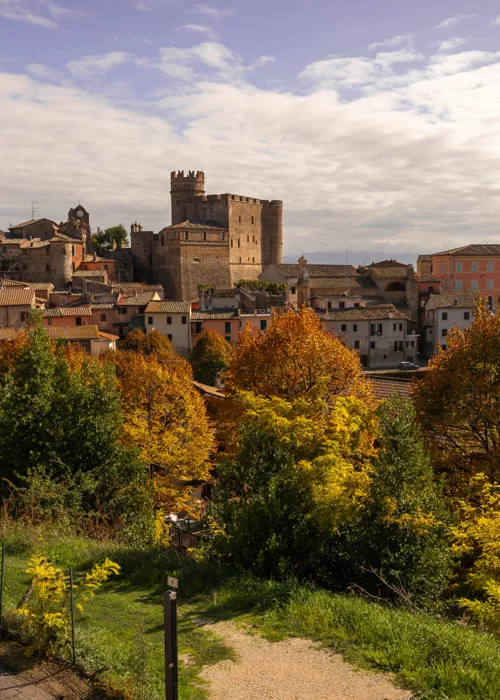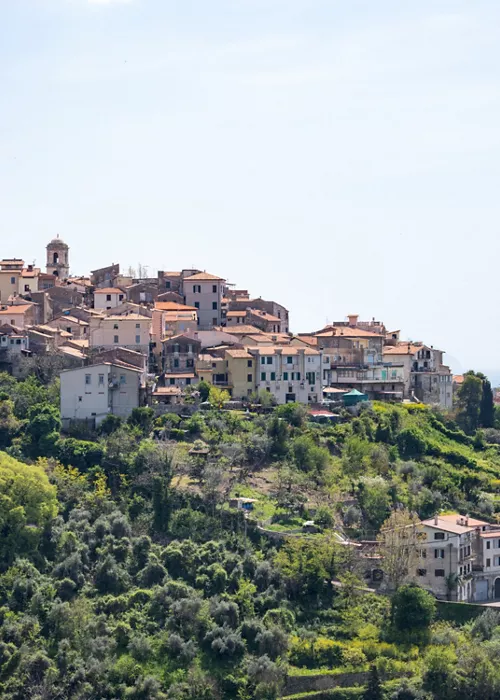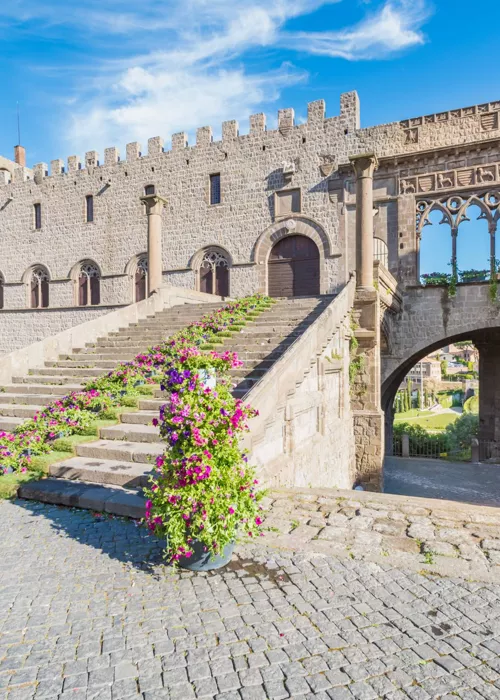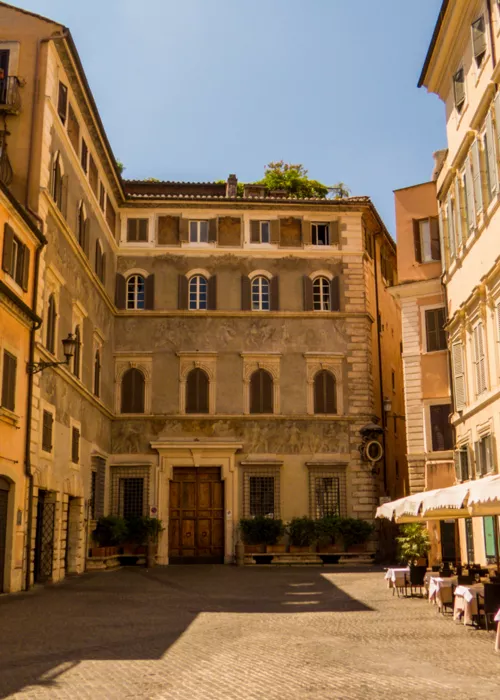Villa Adriana in Tivoli: an imperial Roman marvel
3 minutes
An archaeological testimony to the greatness of the ancient Roman Empire, Villa Adriana, or Hadrian’s Villa, is an open-air museum that has helped make Italy the country with the most sites on the Unesco World Heritage List.
What is it and where is Villa Adriana?
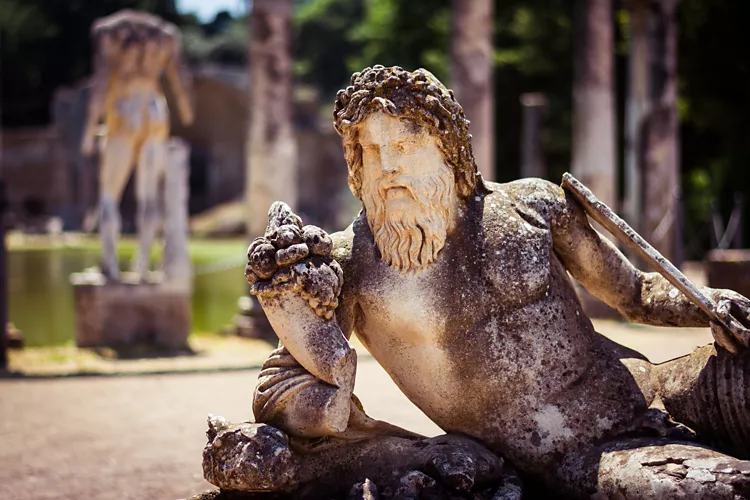
Villa Adriana is an immense imperial villa built at the behest of Emperor Adriano at the foot of the Tiburtine Mountains, in a lush green area rich in water at the gates of the ancient Roman city of Tibur.
Together with Villa d'Este and Villa Gregoriana, Villa Adriana is one of the three Villas of Tivoli, ultimate symbols of the beauty and charm of ancient Tibur.
History and information on Villa Adriana
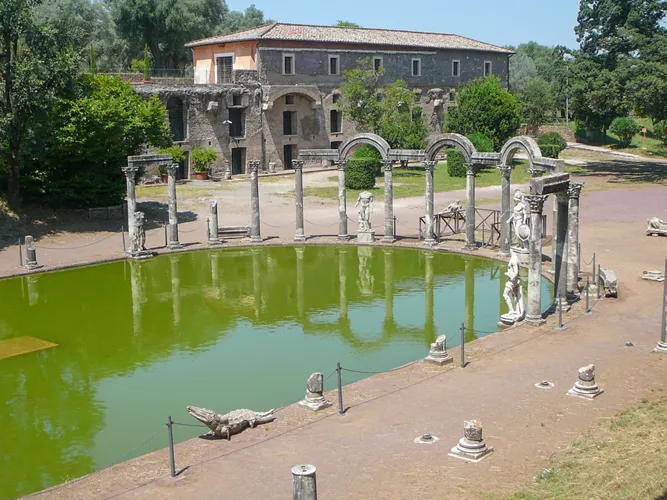
Built between 118 and 138 AD, Villa Adriana is the largest villa ever owned by a Roman emperor. Emperor Hadrian was a man of culture and a great traveller. When commissioning what was to be his residence on the outskirts of Rome, Hadrian asked for the places and monuments that had most impressed him during his many travels to be reproduced inside it.
Hadrian's Villa, built at the gates of ancient Tibur on an area of 120 hectares, therefore became the grandiose villa of Imperial Rome, rich in baths, nymphaea, pavilions, gardens and residential structures representing the provinces conquered by the Roman Empire.
Why it became a UNESCO site
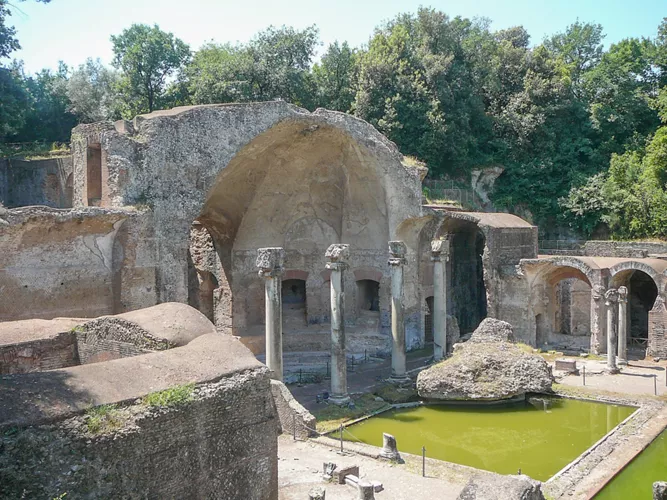
Villa Adriana is a masterpiece that uniquely brings together the finest forms of expression of the material culture of the ancient Mediterranean world. UNESCO listed it as a World Heritage Site in 1999, praising its monuments and their crucial role in the rediscovery of elements of classical architecture by architects of the Renaissance and Baroque periods.
At the behest of the Emperor Adriano, the Villa recreated the spaces of the ideal Roman city, rich in elements of Roman architecture fused with Egyptian and Greek architectural elements. This exceptional complex, according to UNESCO, has profoundly influenced numerous architects and designers of the 19th and 20th centuries.
What to see in Adriana's Villa
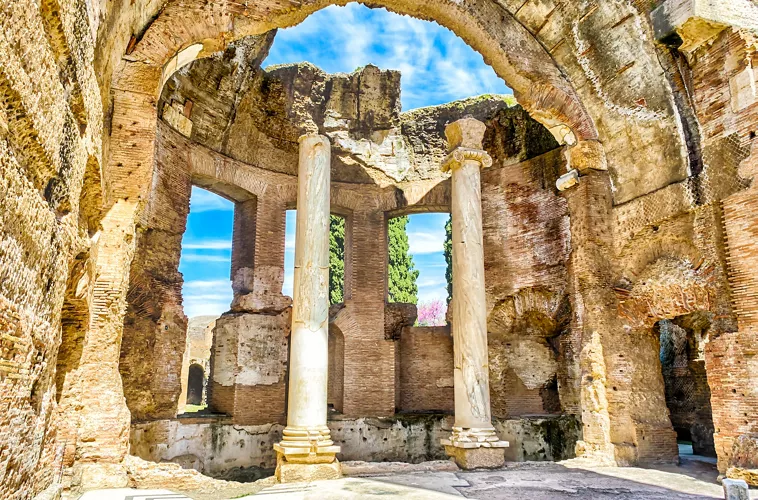
The area is about 40 hectares and a visit opens with a model of the entire archaeological site, which gives an idea of its size.
From the Pecile, the large portico that housed a garden with a long central pool, you pass to the Antinoeion, a temple built to honour the young Antinous, briefly the lover of the emperor Hadrian.
The Hall of the Philosophers has seven niches that once housed statues of the seven sages of ancient Greece. A few metres away is one of the villa's most famous and representative monuments, the Maritime Theatre, a kind of island with an ionic colonnade surrounded by an artificial canal. This fascinating place was the refuge where the Emperor Hadrian liked to retreat to think.
The Canopus of Hadrian’s Villa is a long basin of water adorned with columns and statues culminating in a temple topped by a segmented dome. The remains of two thermal baths can be seen there: the Grandi Terme and the Piccole Terme di Villa Adriana.
Walking around Hadrian's Villa you can also admire the two Libraries, the Greek and Latin Libraries, overlooking the garden and connected by a portico, and the Palazzo Imperiale, the original core of Hadrian's residence and his court.
At the end of the tour, you will come to the Greek Theatre, intended as a court theatre, able to accommodate a small number of spectators, and the impressive Nymphaeum with Temple of Venus.
Before you leave Hadrian's Villa, you must visit the museum: it houses many artefacts found in the villa since the 1950s and four replicas of the Caryatids from the Erechtheion in Athens, which once adorned the Canopus of the Villa.
An ideal city combining the architectural traditions of Ancient Greece, Rome and Egypt, Hadrian's Villa is an exceptional architectural complex whose visit will leave you speechless.

